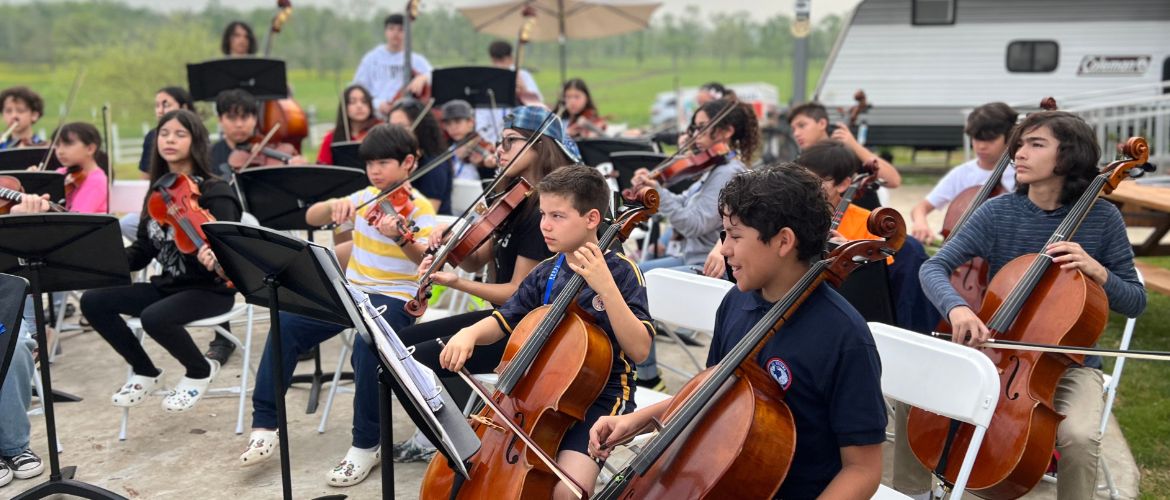By Ana Carolina Morales
In an orchestra, the musicians are in groups according to their instrument families and each one has its own set of instruments. There are four main sections: strings, woodwinds, brass, and percussion. Each group exists to help musicians see their conductor, listen to each other to stay coordinated and distribute the sounds harmoniously.
The string section is the largest family of instruments in a symphony orchestra. Musicians who play the violin, viola, cello, and double bass are always in the first rows of the orchestra, in front of the conductor.
String instruments have wooden and hollow bodies which make their sounds resonate loud and rich.
One way to play these instruments is to use a bow, a wooden-shaped stick with a tight ribbon of horsehair. Bowing produces a smooth sound. Another way to play string instruments is by plucking (also known as pizzicato). Plucking produces sharp and short sounds.
In a Symphony Orchestra, violins and violas are on the left of the conductor, the cellos on the right side, and the basses right behind them. The harps (another string instrument) are usually on the left side of the conductor, near the percussion section.
Now, let’s learn the specifics of each stringed instrument.
Violin and viola
The violin is the smallest instrument in the string family and typically produces the soprano sound in the orchestra. There are two categories in the violin section: Violin I (18 players) and Violin II (16 players). The composer can use these sections in different ways, depending on his vision for the music. Typically, the first violins play higher notes than the second violins.
The viola is a slightly larger instrument and produces a heavier alto sound. In a symphony orchestra, there are usually 12 viola players.
With both, the musicians must place them on their shoulders to play.
Cello and double bass
Because of their size, the cello, double bass, and harps are always vertically on the floor.
Cellos are larger than violas. They have a warmer tone. Their role is being a tenor. There are usually ten cello players in the orchestra.
The basses have a dark and heavy sound. It is the largest string instrument. Eight musicians play the double bass.
The Harp
Even though harps have strings, they are in the percussion section and are auxiliary instruments.
Harps are large and heavy. They have 47 strings, measures 6 ft high, and can weigh between 80 and 90 pounds.
To make sounds, the musicians pluck the strings and also can create an effect by sweeping their hands across the strings.
At the bottom of the harp, seven metal pedals allow each string to produce three notes.
Did you know that At El Sistema Texas, the Hispanic Children’s and Youth Orchestras include all the stringed instruments? Our musicians have won local and international awards because of their proficiency in their string instruments. If you want to see and hear them play, click here to enjoy past concerts.


